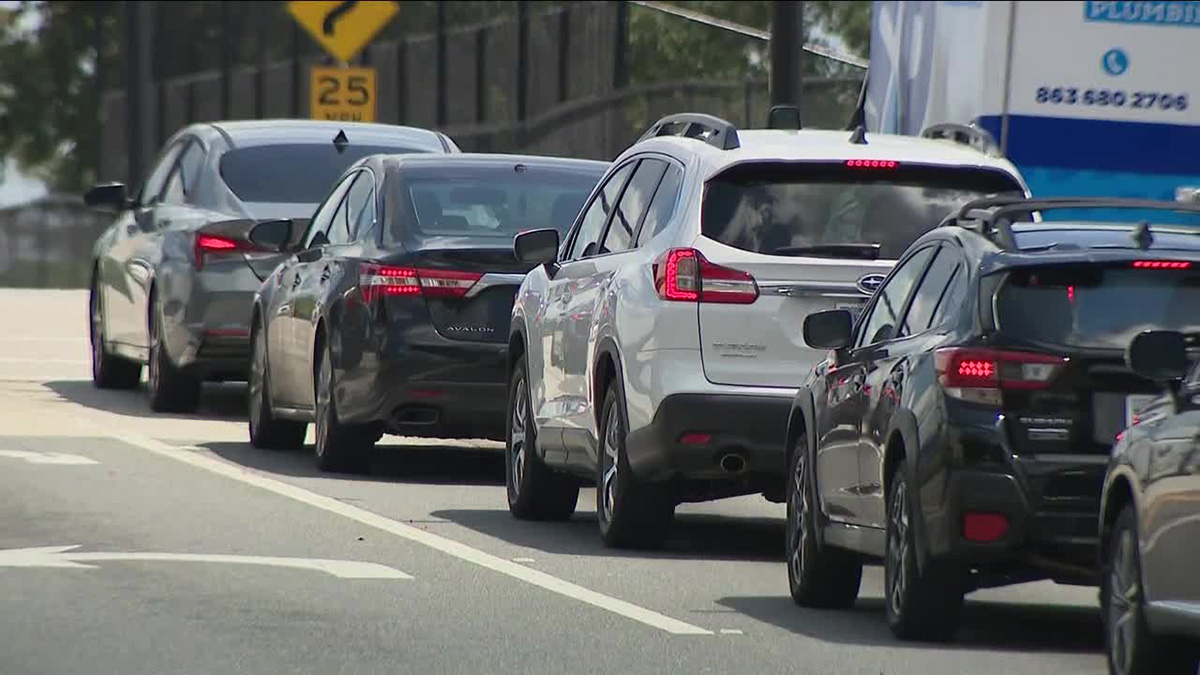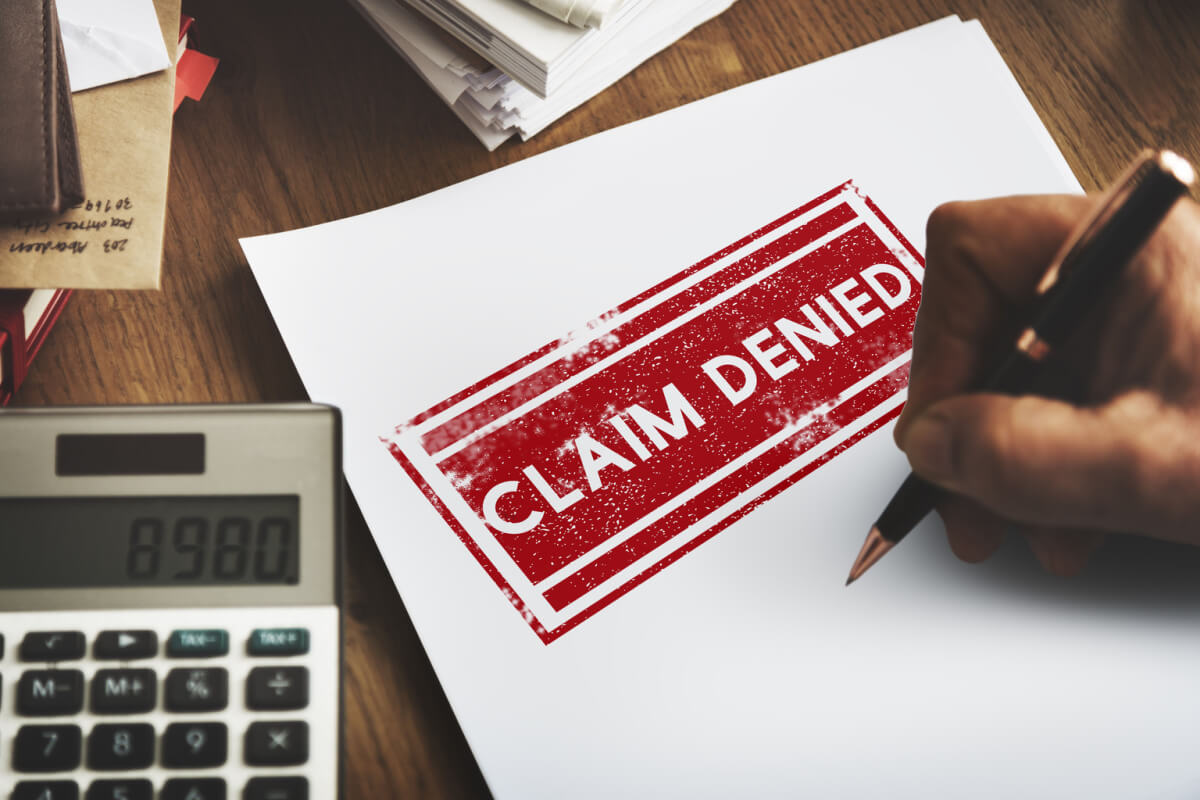

Finance
Why Is Florida’s Car Insurance So Expensive?
Published: November 17, 2023
Discover why car insurance rates in Florida are sky-high, and get expert tips on managing your finances to afford the premiums.
(Many of the links in this article redirect to a specific reviewed product. Your purchase of these products through affiliate links helps to generate commission for LiveWell, at no extra cost. Learn more)
Table of Contents
Introduction
Florida, known for its beautiful beaches and vibrant cities, is also notorious for having some of the most expensive car insurance rates in the United States. Many drivers in Florida are perplexed by the exorbitant costs associated with insuring their vehicles. While the reasons for Florida’s high car insurance prices may vary, several factors contribute to this issue.
Understanding why car insurance rates are higher in Florida is essential for every driver in the state. Whether you’re a long-time resident or planning to move to the Sunshine State, being aware of the underlying factors can help you make informed decisions when it comes to insuring your vehicle and managing your budget.
In this article, we will delve into the reasons why Florida’s car insurance is so expensive. From higher risk factors to unique laws and regulations, these factors are all part of the equation that drives up insurance costs in the state. By shedding light on these factors, we hope to provide a clearer understanding of the challenges that Floridians face in securing affordable car insurance coverage.
Higher Risk Factors
One of the primary reasons for the high car insurance rates in Florida is the presence of numerous higher risk factors. These factors contribute to a greater likelihood of accidents and insurance claims, which in turn leads to increased insurance premiums.
Firstly, Florida has a large population of elderly drivers. While experienced and skilled, older drivers may be more prone to certain health conditions that can affect their driving ability. This can result in a higher risk of accidents and injuries, leading to increased insurance costs.
Secondly, Florida experiences high rates of uninsured drivers. According to a study by the Insurance Research Council, it is estimated that one in four drivers in Florida is uninsured. When an uninsured driver causes an accident, the costs of medical expenses and property damage may fall on the victim or their insurance provider. This increased risk for insurers results in higher premiums for all drivers in the state.
Additionally, Florida’s climate and landscape pose specific challenges for drivers. The state’s frequent rainstorms and hurricane threats make roads slippery and increase the risk of accidents. Moreover, Florida is known for its large number of tourist attractions, which leads to a significant influx of visitors and unfamiliar drivers on the roads. The combination of these factors contributes to a higher risk of accidents and insurance claims.
Lastly, Florida’s densely populated cities and urban areas are subject to heavy traffic congestion. Congested roads increase the likelihood of accidents and lead to more insurance claims. The higher population density also means more vehicles on the road, amplifying the potential for collisions and other accidents.
In summary, the higher risk factors associated with the state of Florida, such as a large population of elderly drivers, a high percentage of uninsured motorists, challenging weather conditions, and heavy traffic congestion, contribute to the elevated car insurance rates experienced by Floridians.
No-Fault Insurance System
An important factor contributing to the high cost of car insurance in Florida is the state’s no-fault insurance system. Under this system, drivers are required to carry Personal Injury Protection (PIP) coverage, which provides compensation for medical expenses and lost wages regardless of who is at fault in an accident.
While the intention behind the no-fault system is to streamline the claims process and ensure that injured parties receive prompt medical care, it has led to increased insurance premiums for Floridians. The PIP coverage requirement can significantly drive up the cost of insurance policies, as insurers bear the added risk of paying out benefits regardless of fault.
Insurance fraud also plays a role in the higher premiums associated with the no-fault system. Fraudulent claims and staged accidents have become a prevalent issue in Florida, leading to increased costs for insurers. These fraudulent claims not only impact insurance companies but also contribute to higher premiums for honest policyholders.
Furthermore, the no-fault insurance system limits the individual’s ability to seek compensation through lawsuits for non-economic damages, such as pain and suffering. This can be frustrating for individuals who believe they are entitled to compensation above and beyond the limits set by PIP coverage. The lack of avenues to pursue full compensation through legal action may indirectly contribute to higher insurance premiums in the state.
It is worth noting that there have been ongoing discussions and proposed legislative changes regarding Florida’s no-fault insurance system. Reforms aim to address the costs associated with PIP coverage and curb fraudulent activities, which could potentially result in lower insurance premiums for Florida drivers. However, until such reforms are implemented, the no-fault system continues to contribute to the higher cost of car insurance in the state.
High Number of Uninsured Drivers
An alarming factor contributing to the expensive car insurance rates in Florida is the high number of uninsured drivers on the roads. According to recent reports, approximately one in four drivers in Florida is uninsured, which is significantly higher than the national average.
When an uninsured driver causes an accident, it creates a burden not only for the victims but also for insured drivers. Insured drivers may be left to pay for their own medical expenses and property damage, even if they were not at fault in the accident. This adds financial strain on the insured drivers and increases the overall cost of insurance in the state.
Moreover, Florida’s no-fault insurance system further exacerbates the issue of uninsured drivers. In theory, the no-fault system is designed to compensate injured parties regardless of fault. However, the reality is that uninsured drivers may not have the financial means to cover the costs of their own medical expenses and property damage. As a result, when uninsured drivers are involved in accidents, insurance companies may be forced to cover the costs, passing these expenses onto policyholders in the form of higher premiums.
The high number of uninsured drivers in Florida is a complex problem, influenced by various factors such as economic conditions and the lack of enforcement mechanisms. Efforts to reduce the number of uninsured drivers in the state are ongoing, including stricter penalties for driving without insurance and public awareness campaigns. However, until significant progress is made in addressing this issue, Florida residents can expect higher car insurance rates compared to states with lower rates of uninsured drivers.
Costly Personal Injury Protection (PIP) Coverage
One of the factors contributing to the high cost of car insurance in Florida is the requirement for drivers to carry Personal Injury Protection (PIP) coverage. PIP coverage is designed to provide benefits for medical expenses and lost wages in the event of an accident, regardless of who is at fault.
While the intention behind PIP coverage is to ensure that individuals receive prompt medical care and financial support following an accident, it has led to increased insurance premiums in the state. The cost of PIP coverage can be quite substantial, especially when combined with the other mandatory insurance requirements in Florida.
One reason why PIP coverage is costly in Florida is the potential for fraudulent claims. The state has been plagued by staged accidents and fraudulent medical billing schemes, contributing to higher insurance premiums for all policyholders. Insurers are forced to factor in the additional risks and costs associated with fraudulent activities when determining premiums.
Another factor that drives up the cost of PIP coverage is the unlimited medical benefit clause in Florida. Under this provision, individuals can potentially receive unlimited benefits for medical expenses related to an accident. While this may provide a safety net for those with severe injuries, it also increases the financial risk for insurance companies and leads to higher premiums.
The high cost of medical care in Florida plays a role in the expensive PIP coverage. Medical fees and services in the state are typically higher compared to other parts of the country, which directly impacts the cost of providing medical benefits under PIP coverage.
Efforts to address the costly nature of PIP coverage in Florida have been made. In recent years, there have been proposals and discussions for reforms, including implementing medical fee schedules and capping benefits. However, these reforms have yet to be fully implemented, and until changes are made, Florida drivers can expect to pay higher premiums for PIP coverage, contributing to the overall expensive car insurance rates in the state.
Population Density and Traffic Congestion
Florida’s population density and traffic congestion are significant factors contributing to the high cost of car insurance in the state. With its bustling cities and popular tourist attractions, Florida experiences heavy traffic, especially during peak times and in urban areas.
A high population density means more vehicles on the road, increasing the likelihood of accidents and insurance claims. The more vehicles there are, the higher the risk of collisions and property damage, leading to higher insurance premiums for all drivers.
Traffic congestion is another challenge that Florida drivers face on a daily basis. Congested roads can lead to increased frustration and impatience among drivers, often resulting in aggressive driving behaviors and a higher risk of accidents. Insurance companies consider the prevalence of traffic congestion when determining premiums, as congested roads increase the probability of accidents and subsequent claims.
Furthermore, traffic congestion can also contribute to longer emergency response times. Delays in emergency services reaching accident scenes can result in more severe injuries and potentially higher medical costs, which can ultimately impact insurance rates.
The high population density and traffic congestion in Florida’s metropolitan areas, such as Miami, Orlando, and Tampa, significantly contribute to the overall cost of car insurance in the state. Drivers in these densely populated areas often face higher premiums due to the increased risk factors associated with heavy traffic and a higher likelihood of accidents.
Efforts to alleviate traffic congestion and improve transportation infrastructure are ongoing in Florida. Investments in public transportation, road expansions, and alternative transportation options aim to mitigate the challenges posed by population density and traffic congestion. However, until significant improvements are made, drivers can expect to face the added financial burden of higher insurance premiums due to the increased risk associated with crowded roadways.
Frequency of Accidents and Insurance Claims
The frequency of accidents and insurance claims in Florida is a significant contributing factor to the high cost of car insurance in the state. Florida consistently ranks among the states with the highest number of accidents and insurance claims each year.
Several reasons contribute to the high frequency of accidents in Florida. Firstly, as a popular tourist destination, the state sees a significant influx of visitors, many of whom may be unfamiliar with the local roads and driving regulations. The combination of locals and tourists sharing the roads can lead to an increased risk of accidents.
Additionally, Florida’s large retired population contributes to the high number of accidents. Older drivers may face age-related challenges, such as diminished eyesight, slower reaction times, and decreased mobility, which can increase the risk of accidents. The presence of retirement communities and senior drivers on the roads adds to the overall accident frequency in the state.
Furthermore, some areas in Florida have a reputation for aggressive driving behaviors, such as speeding and tailgating. Reckless driving habits increase the likelihood of accidents and subsequent insurance claims. The prevalence of aggressive driving can also contribute to higher insurance premiums for all drivers in the state, as insurers account for the increased risk associated with these behaviors.
The high frequency of accidents in Florida directly impacts insurance rates. Insurance companies must account for the increased likelihood of claims and the associated costs when setting premiums. The more frequently accidents occur, the greater the financial risk for insurers, which is reflected in the higher insurance rates experienced by Florida drivers.
Efforts to reduce the frequency of accidents and insurance claims in Florida have been ongoing. Law enforcement agencies work to enforce traffic regulations and target aggressive driving behaviors. Educational campaigns promoting safe driving practices, including defensive driving techniques and the importance of adhering to speed limits, are also prevalent.
Additionally, advancements in technology, such as vehicle safety features and automated assistance systems, may help mitigate the frequency of accidents over time. However, until significant progress is made, Florida residents can expect higher car insurance rates due to the elevated frequency of accidents and subsequent insurance claims in the state.
Severe Weather Conditions
Florida’s geographic location makes it susceptible to severe weather conditions, such as hurricanes, tropical storms, and frequent thunderstorms. These weather events contribute to the high cost of car insurance in the state.
Hurricanes, in particular, pose significant risks to both drivers and their vehicles. The strong winds, heavy rains, and potential for flooding can lead to an increased number of accidents and extensive property damage. Insurance companies take into account the increased risk associated with these weather events when determining premiums, as they may have to cover repairs or replacements for damaged vehicles.
Tropical storms and thunderstorms can also create hazardous driving conditions. Reduced visibility, slippery road surfaces, and the potential for fallen trees or debris on the road increase the risk of accidents. Insurers factor in the heightened likelihood of accidents during severe weather conditions when setting insurance rates.
Moreover, the damages caused by severe weather events often lead to an influx of insurance claims. Policyholders may seek compensation for vehicle repairs or total losses resulting from storms. The higher volume of claims can result in increased costs for insurance companies, and these costs are passed on to policyholders through higher premiums.
Insurance companies closely monitor Florida’s weather patterns and historical data to assess the risk associated with severe weather conditions. This analysis allows them to adjust rates accordingly and ensure that they can cover potential claims resulting from storms or hurricanes.
In response to the impact of severe weather conditions on car insurance rates, residents of Florida are encouraged to take preventive measures. This includes securing their vehicles during storms, following weather advisories, and considering comprehensive coverage that protects against weather-related damages.
While it is impossible to control or prevent severe weather events entirely, being prepared and cautious during inclement conditions can help mitigate the risk of accidents and subsequent insurance claims, potentially leading to more favorable insurance rates.
Fraudulent Claims
Fraudulent claims are a significant factor contributing to the high cost of car insurance in Florida. Unfortunately, the state has gained a reputation for being a hotbed of insurance fraud, which ultimately impacts insurance premiums for all policyholders.
Insurance fraud can take various forms, including staged accidents, exaggerated injuries, and fraudulent medical billing. These fraudulent activities drive up the costs for insurance companies, as they are forced to pay out claims that may be unwarranted or inflated.
Staged accidents are orchestrated by individuals or groups with the intention of submitting fraudulent insurance claims. These accidents may involve sudden stops, deliberate collisions, or manipulation of the circumstances to make it appear as though an accident has occurred. Fraudsters involved in staged accidents often collaborate with dishonest medical professionals and legal representatives to maximize their fraudulent claims.
Exaggerated injuries are another prevalent form of insurance fraud. Individuals may claim to have more severe injuries than they actually do, prolonging medical treatment and increasing the costs associated with their claims. This type of fraud can lead to higher insurance payouts and, subsequently, higher premiums for all policyholders.
Fraudulent medical billing schemes are also common in Florida. Healthcare providers may overcharge or bill for services that were never provided. These fraudulent billing practices result in higher medical costs for insurance companies, which are ultimately passed on to policyholders through increased premiums.
The prevalence of fraudulent claims in Florida necessitates strict monitoring and investigation by insurance companies to identify and prevent fraudulent activities. Insurers employ various tactics, including data analysis, surveillance, and cooperation with law enforcement agencies, to uncover fraudulent schemes.
Efforts to combat insurance fraud also involve legislation, public awareness campaigns, and stricter penalties. For instance, Florida has established special investigative units within law enforcement agencies dedicated to combating insurance fraud. Additionally, the state has implemented laws to deter fraudulent activities and punish perpetrators.
While these measures aim to reduce insurance fraud, it remains a persistent issue in Florida. The costs associated with investigating and preventing fraud, as well as the financial impact of fraudulent claims, contribute to the high cost of car insurance in the state.
As a policyholder, it is essential to be vigilant and report any suspicions of fraudulent activities to your insurance provider. By working together to combat insurance fraud, we can help mitigate its impact and ultimately work towards more affordable car insurance rates for everyone in Florida.
Lack of Competitive Market
The lack of a truly competitive market is a contributing factor to the high cost of car insurance in Florida. Unlike some other states, Florida has a limited number of insurance companies operating within its borders.
In a competitive market, multiple insurance providers would offer a wide range of coverage options and competitive pricing to attract customers. However, the limited number of insurance companies in Florida reduces competition and limits options for consumers. This lack of competition gives insurance providers more control over pricing and allows them to set higher premiums.
With fewer choices, consumers may be forced to accept higher insurance rates or have limited bargaining power when it comes to negotiating premiums. The absence of robust competition also reduces the incentive for insurance companies to offer lower rates, as there are fewer companies vying for customers.
Moreover, the high risk factors associated with insuring vehicles in Florida can make it less attractive for new insurance companies to enter the market. Without new competitors entering the scene, the existing insurance companies have less pressure to keep prices competitive or innovate their offerings.
Efforts to address the lack of a competitive market are ongoing. State policymakers and regulators are working to attract more insurance providers to Florida, encouraging competition and ultimately driving down premiums. By creating a more favorable environment for insurance companies, policymakers hope to increase the options available to consumers and foster a more competitive marketplace.
Nevertheless, the impact of a lack of competition in the market continues to be felt by Florida drivers, who face higher car insurance rates due to limited choices and reduced pressure on insurers to offer more affordable premiums.
As a consumer, it is important to regularly review your insurance policies and explore all available options. Comparing rates from different providers and seeking out any discounts or incentives can help mitigate the impact of the lack of competition and potentially secure a more competitive premium rate.
Conclusion
Florida’s car insurance rates are among the highest in the United States, and several factors contribute to this issue. Higher risk factors, such as a large population of elderly drivers and a high percentage of uninsured motorists, significantly impact insurance premiums. The state’s mandatory Personal Injury Protection (PIP) coverage and the challenges associated with the no-fault insurance system contribute to the expensive nature of car insurance in Florida.
Additionally, the population density, traffic congestion, and frequency of accidents in the state play a role in increasing insurance costs. Severe weather conditions, such as hurricanes and tropical storms, pose additional risks and lead to higher premiums. Furthermore, the prevalence of fraudulent claims and the limited competition in the insurance market contribute to the higher cost of coverage in Florida.
Efforts are being made to address these issues, including proposed legislative reforms, stricter law enforcement against insurance fraud, and initiatives to attract more insurance providers to the state. However, until significant changes are implemented, Florida consumers can anticipate higher car insurance premiums compared to other states.
To mitigate the impact of expensive car insurance, drivers should regularly review their coverage, compare rates from different providers, and take advantage of available discounts. Additionally, practicing safe driving habits, being vigilant on the roads, and reporting any suspicions of fraudulent activities can contribute to a decrease in insurance costs over time.
Understanding the underlying factors that contribute to the high cost of car insurance in Florida is crucial for residents and prospective drivers. By staying informed and proactive, individuals can make informed decisions and seek out the most affordable coverage options available to protect their vehicles and themselves on the Sunshine State’s roads.














